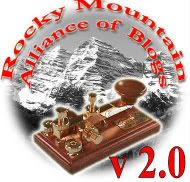More Plagiarism From Ward Churchill?
Or simply "references", as he and his lawyer David Lane will undoubtedly argue:
Did University of Colorado ethnic studies professor Ward Churchill see secret Canadian government files about child abuse in Indian boarding schools?Academics often cite primary sources only available in secondary sources due to lack of access for many reasons--the primary sources have since been destroyed, they may be in remote archives where travel costs are not justified to view the same documents, or of lesser significance where a simple reference in the footnotes to the primary source and the secondary source that first made use of the document. Just like blog entries that cite another blog for the story while also noting the source of that story (the hat tip and the via). Unless a scholar is doing primary research on that exact source or specific document, a passing reference is perfectly acceptable. Scholars often have similar, overlapping research interests that don't necessitate a complete reexamination or first-hand knowledge (the original copy as opposed to a reasonable facsimile, in microfiche or on the Internet, for example) of the primary source.
Highly unlikely, says a Canadian researcher who reviewed the files and cited them in his 1999 book about the history of the infamous boarding schools.
So how did references to those documents end up in Churchill's 2004 book on the schools?
"Unless he got himself into one of those black suits that Tom Cruise used in that movie and snuck himself into the Department of Indian Affairs at midnight, he's not seen the documents," said John S. Milloy, a professor at Trent University in Peterborough, Ontario.
. . .
Churchill's book, Kill the Indian, Save the Man, and Milloy's book, A National Crime, deal with an ugly chapter in U.S. and Canadian history.
. . .
Milloy, who published first, had access to files of Indian and Northern Affairs Canada because he was a researcher with the Royal Commission on Aboriginal Peoples, a massive government probe into mistreatment of Indians.
Milloy said he was the only person, apart from Department of Indian Affairs officials, with access to the Indian and Northern Affairs Canada files. Even his graduate assistants had to stay outside the room where he reviewed the materials, he said.
Patricia Valladao, an Indian and Northern Affairs Canada spokeswoman, said some of the agency's files are public, and some parts of secret files are available, but heavily redacted.
Still, she said, leaks from closed files are possible.
Milloy was given copies of documents, but only under promises not to share them. He said all of the references in his book were to confidential documents.
Churchill, in three cases in his book, cites documents with the same file numbers as the ones Milloy quotes.
"If he's quoting INAC," Milloy said, "then he's taken it from me, plain and simple, no doubt."
Churchill's citations often appear to be copious and overwhelming, supporting the notion put forth by his proponents that his scholarship is impeccable and above reproach. Citing documents unavailable to everyone outside of the author of the earlier work certainly raises more eyebrows and once again calls into question Churchill's "research" methods. He could certainly have obtained leaked files from sources with access that may be sympathetic to Churchill's causes and research interests. Evidence of plagiarism? No--unless substantial similarities can be proven in a line-by-line examination, supported by the lack of access to confidential documents. In Churchill's case, however, given his past academic "excesses" and tendency toward "borrowing" without credit, these new charges will no doubt fuel more debate about Churchill's academic record--and trustworthiness.




0 Comments:
Post a Comment
Subscribe to Post Comments [Atom]
<< Home